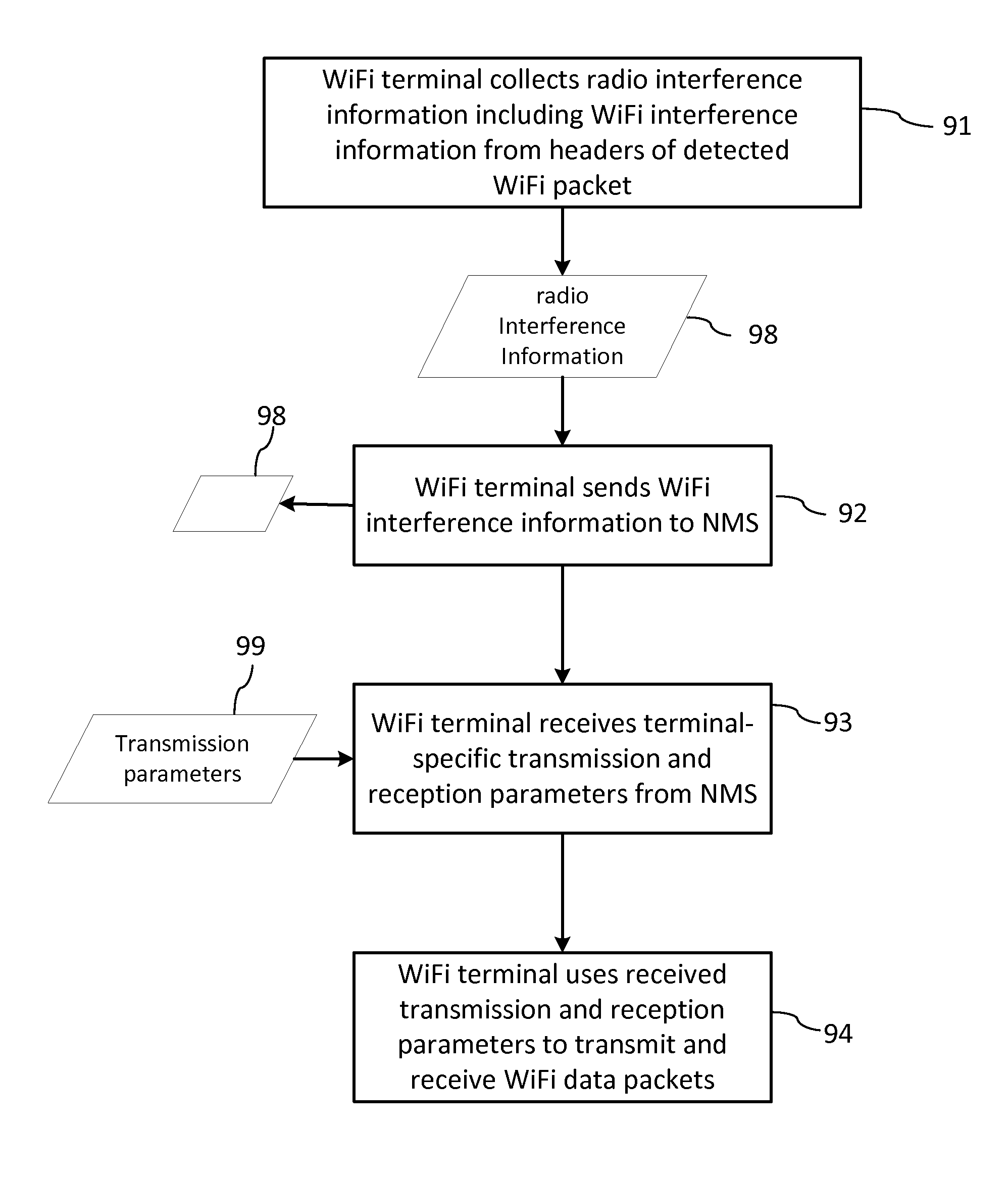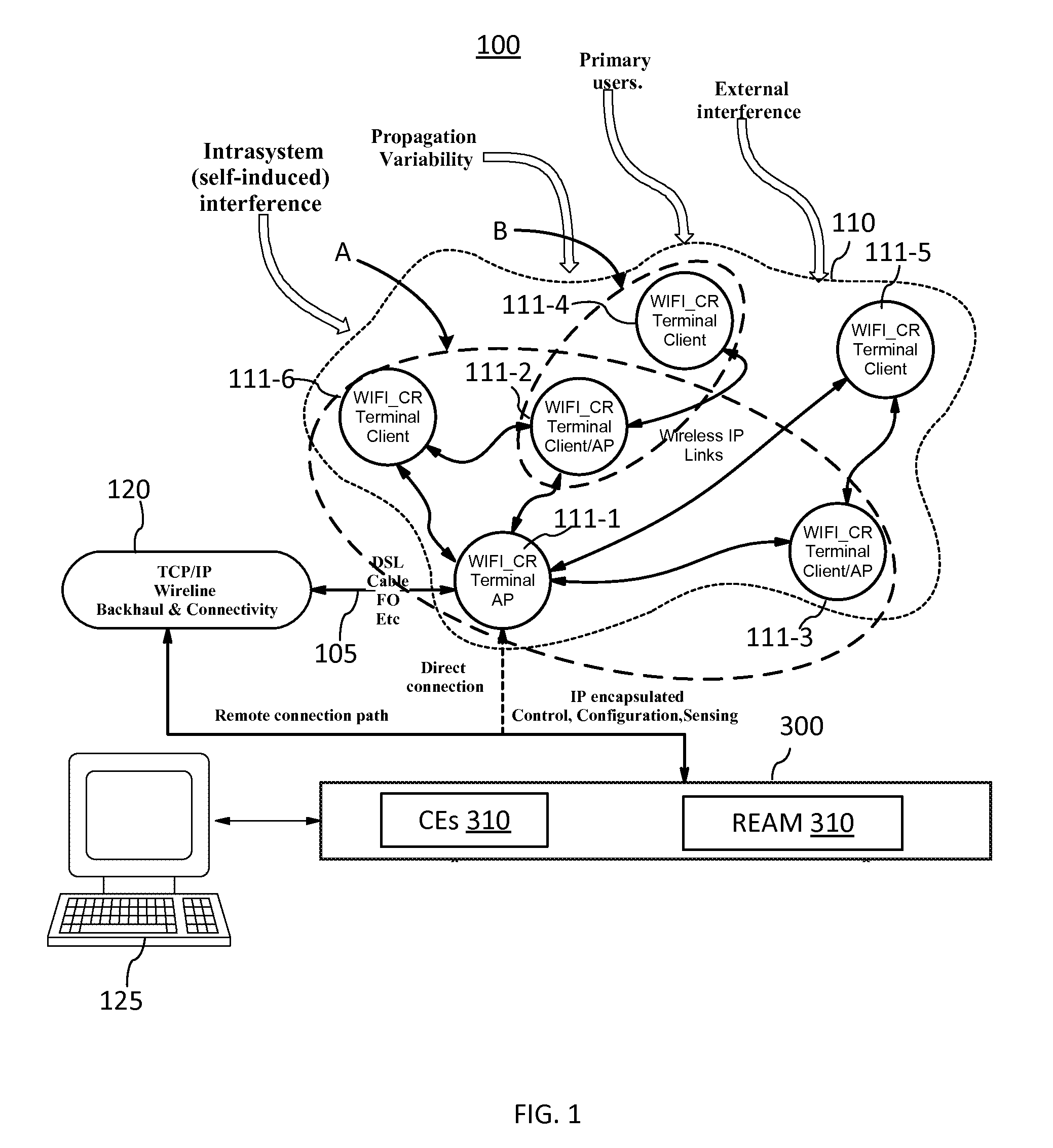Cognitive WiFi radio network
a radio network and wifi technology, applied in the field of wireless networks, can solve the problems of inability to adapt to wide-area networks, inability to use wide-area networks, and inability to meet the needs of users, so as to avoid radio interference in the wifi network, the effect of avoiding interferen
- Summary
- Abstract
- Description
- Claims
- Application Information
AI Technical Summary
Problems solved by technology
Method used
Image
Examples
Embodiment Construction
[0025]The invention will be described in connection with a number of exemplary embodiments. To facilitate an understanding of the invention, many aspects of the invention are described in terms of sequences of actions to be performed by functional elements of a CR WiFi network system, including but not limited to WiFi_CR terminals. It will be recognized that in each of the embodiments, the various actions including those depicted as blocks in flow-chart illustrations and block schemes could be performed by specialized circuits, for example discrete logic gates interconnected to perform a specialized function, by computer program instructions being executed by one or more processors, or by a combination of both. Thus, the various aspects of the invention may be embodied in many different forms, and all such forms are contemplated to be within the scope of the invention.
[0026]As used herein, the terms “first”, “second” and so forth are not intended to imply sequential ordering, but ra...
PUM
 Login to View More
Login to View More Abstract
Description
Claims
Application Information
 Login to View More
Login to View More - R&D
- Intellectual Property
- Life Sciences
- Materials
- Tech Scout
- Unparalleled Data Quality
- Higher Quality Content
- 60% Fewer Hallucinations
Browse by: Latest US Patents, China's latest patents, Technical Efficacy Thesaurus, Application Domain, Technology Topic, Popular Technical Reports.
© 2025 PatSnap. All rights reserved.Legal|Privacy policy|Modern Slavery Act Transparency Statement|Sitemap|About US| Contact US: help@patsnap.com



